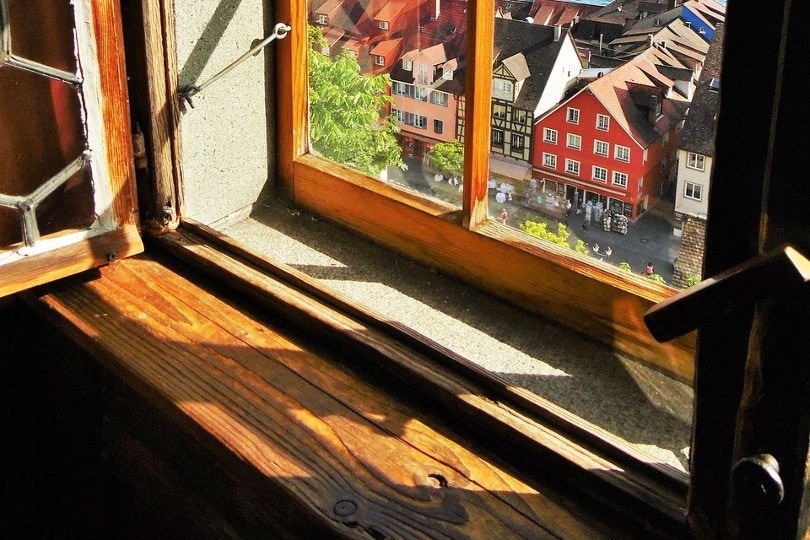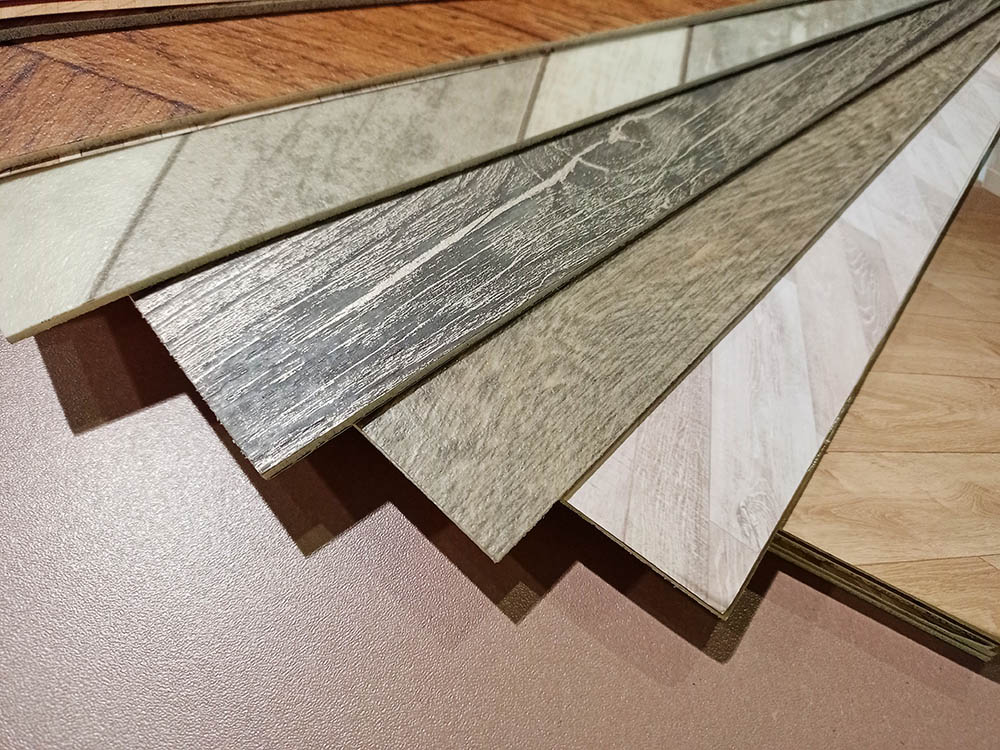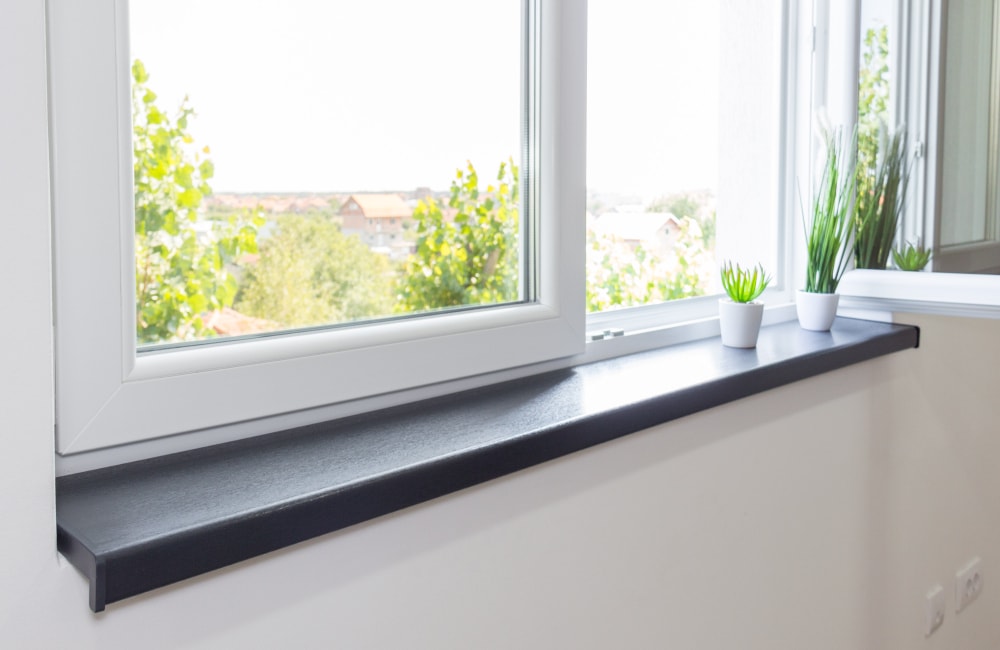What Is a Window Sill? Advantages, Disadvantages, & Type
-
Ed Malaker
- Last updated:

The window sill is the horizontal shelf-like board at the bottom of a window. Some people also call it a window bottom or window ledge. Window sills have been around as early as the Bronze Age, but many people are confused about what they do. If you want to know the answer and understand what options are available, keep reading!
 How Does It Work?
How Does It Work?
The window sill is a horizontal platform at the bottom of the window. The portion that extends away from the exterior wall is the sill, while the part that extends into the room is the stool. However, many people call the interior part the sill. So, it can sometimes be difficult to determine what part people are referring to when they mention a window sill.
While it looks flat, the surface has a slight tilt, enabling water and snow to run away from the house so it doesn’t cause damage to the walls. It also helps prevent moisture from absorbing into the window sill. The window stool does the same thing on the inside of the home.

What Are the Different Types of Window Sills?
Wood
Wood is the most common type of window sill that you are likely to find in the United States because it’s relatively inexpensive, easy to build, effective, and looks great. The downside to wood is that it’s not as durable as many other options, and you will need to treat it regularly with paint or sealer to keep it in good shape. You will also need to treat the interior stool. In many cases, the stain and polyurethane with a traditional appearance can look extremely attractive.
Chipboard
Chipboard is a type of wood window sill that uses compressed and glued sawdust. It’s an inexpensive material that is quite durable and easy to install. The downside is that you will need to treat it like wood with paint or sealer to keep out moisture, and it isn’t as attractive as traditional wood.
Stone
A stone window sill is more expensive than wood but is extremely durable and is a good choice for someone who lives in a harsh environment. You will often see them in brick buildings. Stone also makes a good choice for the kitchen, bathroom, and balcony. It requires little maintenance whether you are using a real or artificial variety, and it always looks great.
Tile
You will usually see a tile window sill in a kitchen or bathroom. It’s almost as durable as a stone window sill and highly customizable, so you can create any appearance that you want. The glossy surface is easy to keep clean and is resistant to moisture. The only downside is that the grout between the tiles can degrade or become dirty, requiring maintenance.

Metal
The metal window sill is an increasingly popular choice in modern buildings. Metals like aluminum are extremely resistant to the elements and won’t absorb moisture, so they can last many years without much maintenance. An aluminum window sill is also inexpensive to make and install, with the only downside being that it isn’t as attractive as some other options.
Plastic
Plastic is one of the fastest-growing window sill materials because it’s less expensive than metal and almost as durable. It’s a popular choice in urban apartments and low-cost structures. You can paint it any color, and it’s waterproof with a good high heat ratio, so it won’t warp or bend. The only downside is that it isn’t as strong as some other options, so it might not make a good window stool for people to place heavy plants, books, and pets.
Window Apron
The window apron isn’t a type of sill but is an addition to it, and not all window sills have them. It comes down below the window sill to cover the wall and provide extra protection and insulation to the area right below the window. Manufacturers usually use the same material that they use for the sill, so it looks like one unit. It can help improve a window’s appearance and provide extra protection from extreme weather.
Where Is It Used?
You will find a window sill on any window. It’s an essential part of the construction that helps stabilize the window frame, hold the sash in place, and provide a stop for the window when you close it.

Advantages of a Window Sill
Moisture Protection
The primary advantage of the window sill is to keep moisture out of your home. For example, if there were no tilted window sill pulling water away from the house, it might move into the walls or even damage the foundation. Without the window stool, water might get on the walls and cause damage when it rains.
Decorative
Another big advantage of the window sill is that it makes it more decorative. Many people like to put potted plants on the sill because they will receive plenty of sunlight and even get watered when it rains. You can also place artwork or other items there. People also put plants on the window stool, and it makes a comfortable resting place for cats.
Insulation
Your window sill creates a barrier that will help prevent air from entering your home when the window is closed. It will also help prevent air from entering the walls around that part of the window frame.
Window Frame Support
Your window sill adds strength to the frame, which helps prevent it from warping due to extreme temperature changes. It also helps the frame be more stable with the window closed. However, flimsier materials, like aluminum, might not provide as much strength as many other materials.
Disadvantages of a Window Sill
The only real disadvantage of a window sill is that some types, like wood, will require frequent maintenance to keep them in good shape, and they can wear out after a while, requiring you to replace them. In rare cases, warped wood can create gaps in the wood that will enable insects to enter and create a home, which will cause the material to break down faster.
Frequently Asked Questions (FAQs)
Do I Need a Window Sill?
Yes. All windows need a window sill, and it’s part of the construction of the window frame.
What Happens If You Don’t Have a Window Sill?
If you installed a window without a window sill, there is a good chance that you will get water damage. The damage will occur on the walls inside and outside and on the floor. It will also be more likely to get inside the walls. The frame will be more likely to warp, making the window more difficult to operate.
 Conclusion
Conclusion
The window sill is an important part of any window construction, and it helps move rain and snow away from the house so you don’t receive water damage. It also provides structural support for the frame and helps prevent warping. A properly installed window sill will help create a strong barrier that prevents air from entering under the window. A sill also typically makes the window look more attractive and provides space for potted plants and other objects.
- You might also like: Are Mosquitoes Attracted to Visible or UV Light?
Featured Image Credit: nadja-golitschek, Pixabay
Contents
 How Does It Work?
How Does It Work?